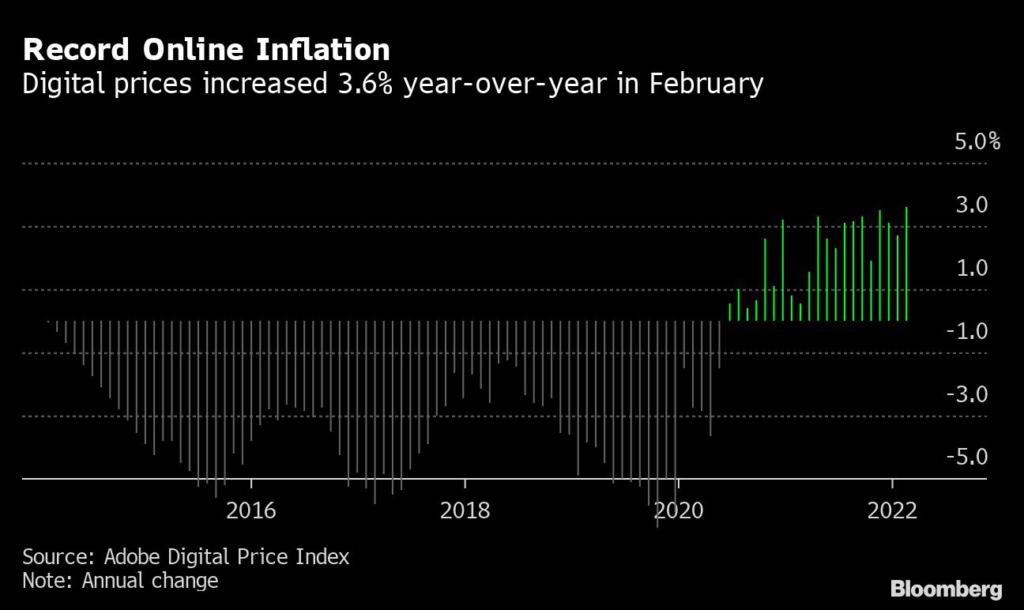(Bloomberg) — Prices of groceries bought online soared by a record 7.6% last month in the U.S., according to data compiled by software company Adobe Inc. And that’s even before accounting for the delivery costs.
Overall, Adobe’s digital price index rose 3.6% in February from a year earlier, the highest rate in data going back to 2014. Clothing jumped 16.7%, the most among 18 categories. By contrast, electronics, toys and computers saw prices drop.
While digital inflation isn’t rising as fast as the broader consumer-price indices published by the government, it’s been catching up during the pandemic. And deliveries are getting even more expensive after Russia’s war with Ukraine send the prices of gas and many other commodities soaring.
So far, there’s no sign that decades-high inflation in the country has significantly dented consumer spending — at least not at the macro-economic level.
Retail sales excluding cars rose 8.7% last month, boosted in part by inflation, according to the latest report this week from Mastercard SpendingPulse. Spending on work clothes surged by 37.6% as many employees prepared to return at least part-time to the office.
“Despite inflation, consumers are putting their record savings to work and expressing themselves through fashion again,” Steve Sadove, senior advisor for Mastercard and former chief executive offer of Sacks Inc., said in a statement.
The pandemic has accelerated the boom in e-commerce, and Adobe anticipates online shopping to exceed $1 trillion in 2022.
Before Covid-19, e-commerce was a heaven of discounts, with prices tracked by Adobe declining year over year. Not anymore: June 2020 marked the first month of price increases in the Adobe index.
The recent bout of inflation brought home the importance of tracking purchases that are increasingly made from apps rather than a trip to the store. Adobe created a web portal this week to provide a detailed view into what people pay for online.
“These real-time signals are becoming more vital for businesses and policymakers to understand changing consumer behaviors, and its impact on the offerings they provide,” Patrick Brown, vice president of growth marketing and insights at Adobe, said in a press release.
More stories like this are available on bloomberg.com
©2022 Bloomberg L.P.











